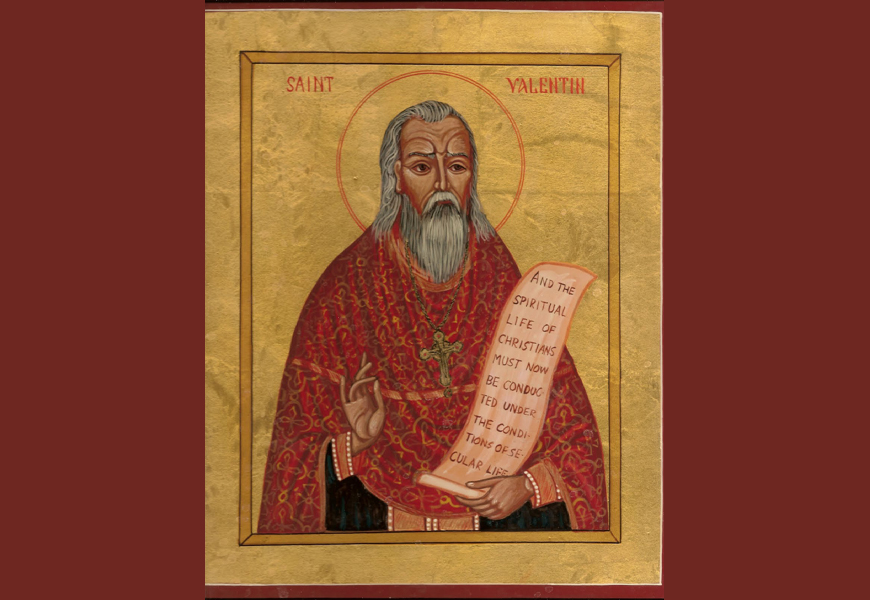Every February 14th, millions of people around the world exchange heart-shaped chocolates, roses, and handwritten notes, all in the name of love. But behind the Hallmark cards and candlelit dinners, there’s a mystery—who exactly was St. Valentine, and why is he associated with romance?
The truth is, history is a bit murky when it comes to St. Valentine. In fact, there may have been more than one Valentine behind the legend. The Catholic Church recognizes multiple saints named Valentine (or Valentinus), all of whom were martyred. However, the most famous story traces back to a priest who lived in Rome during the 3rd century.
The Rebel of Love
One of the most popular legends describes St. Valentine as a defiant priest who performed secret marriages during the reign of Emperor Claudius II Gothicus in the 3rd century AD. At the time, Claudius had imposed a ban on marriages for young men, believing that single men made better soldiers than those burdened with wives and families.
Valentine, seeing the injustice of this law, continued to perform wedding ceremonies in secret, helping young lovers unite despite the emperor’s decree. Eventually, his actions were discovered, and he was arrested and sentenced to death.
According to some versions of the tale, Valentine was interrogated by the emperor himself. Claudius was said to have taken a liking to the priest—until Valentine tried to convert him to Christianity. At that point, the emperor sentenced him to execution.
Another, more romantic legend claims that while imprisoned, Valentine befriended (and possibly fell in love with) the jailer’s blind daughter. It is said that through his prayers, he miraculously restored her sight. Before his execution, he allegedly wrote her a note, signing it “from your Valentine”—a phrase that has endured for centuries.
On February 14, around the year 269 AD, Valentine was beaten, stoned, and finally beheaded outside the Flaminian Gate in Rome. His sacrifice made him a martyr, and over time, he was venerated as a saint.
The Many Valentines: One Name, Many Stories
While this story of Valentine is the most well-known, historians believe there may have been multiple Valentines who contributed to the legend.
- St. Valentine of Terni: A bishop from Terni (a city in central Italy), who was also martyred on February 14, though some say he was the same person as the Roman priest.
- A Valentine from Africa: Another Valentine, possibly a martyr in Roman-controlled Africa, is mentioned in some records but with little detail.
- A Physician and a Christian Healer: Some accounts suggest that Valentine was not just a priest but also a physician, known for healing the sick and helping persecuted Christians.
Because of these multiple figures and overlapping stories, the real identity of St. Valentine remains a mystery.
From Martyr to Cupid’s Patron Saint
Despite his tragic end, Valentine’s legacy grew over time. In 496 AD, Pope Gelasius I officially declared February 14 as St. Valentine’s Day, though the holiday had little to do with romance at the time.
It wasn’t until the Middle Ages that Valentine’s Day became associated with love and courtship. One of the earliest references to Valentine’s Day as a romantic occasion comes from Geoffrey Chaucer, the famous English poet. In his 1382 poem “Parliament of Fowls,” Chaucer linked February 14 with the mating season of birds, writing:
*”For this was on Saint Valentine’s Day,
When every bird comes there to choose his mate.”*
This poetic connection between love and Valentine’s Day set the foundation for the holiday as we know it.
The Evolution of Valentine’s Day
By the 17th and 18th centuries, Valentine’s Day had evolved into a day for lovers to express their affection through handwritten notes, poetry, and small gifts. The first mass-produced Valentine’s Day cards appeared in the early 19th century, and by the 20th century, the holiday had become a global celebration of love.
Today, Valentine’s Day is a multi-billion-dollar industry, with people around the world exchanging cards, chocolates, flowers, and jewelry. But at its heart, the holiday still carries the essence of its origins—the story of a man who stood up for love, even in the face of death.
The Mystery Remains
Despite centuries of storytelling, the true identity of St. Valentine remains elusive. Was he a brave priest who secretly married couples? A bishop who healed the sick? A romantic who left behind the first-ever Valentine’s note?
The reality is, we may never know for sure. But one thing is certain—his name has become synonymous with love, devotion, and sacrifice.
So, the next time you send a Valentine’s Day card or plan a romantic evening, remember the man (or men) behind the holiday—someone who risked everything for the sake of love.












